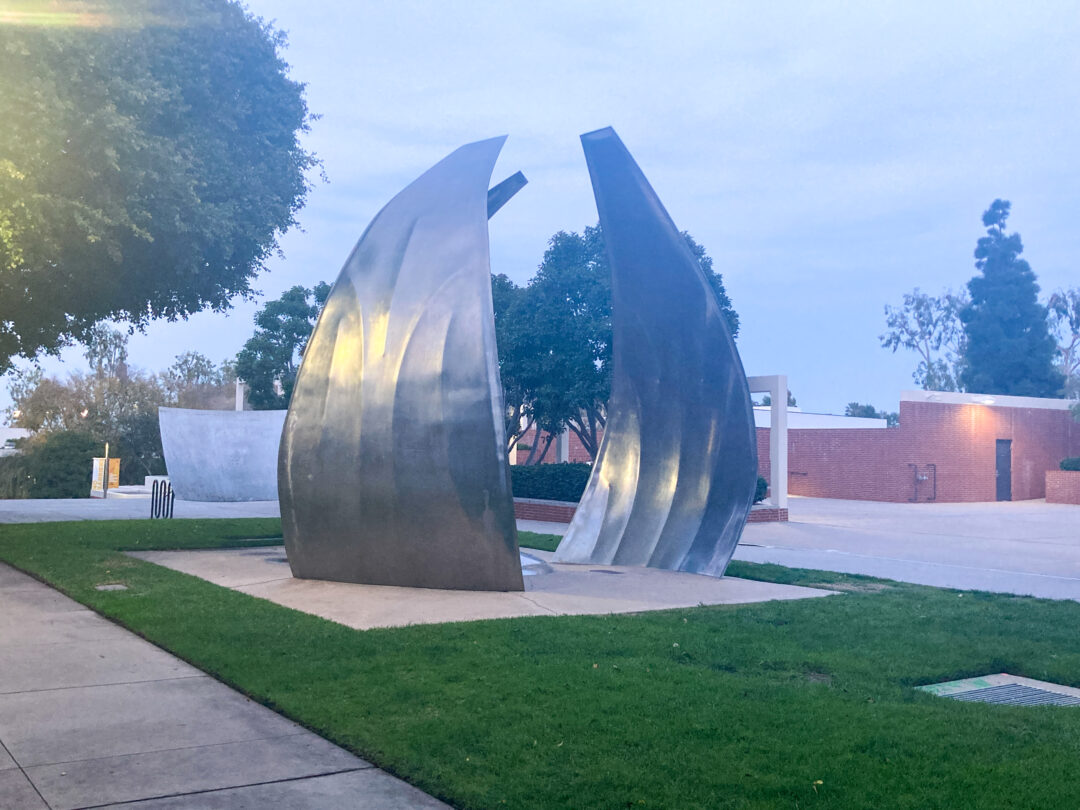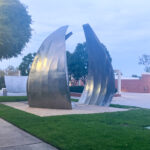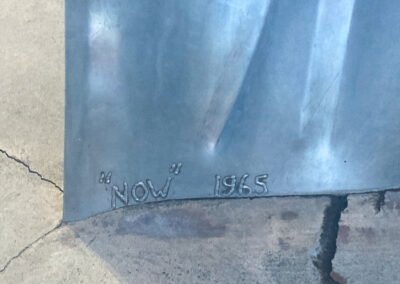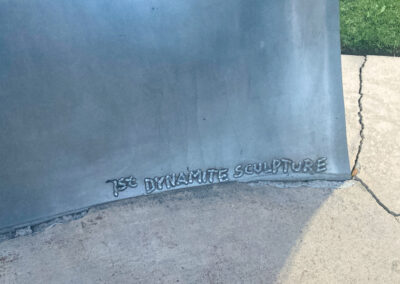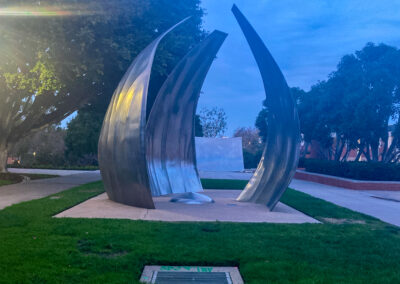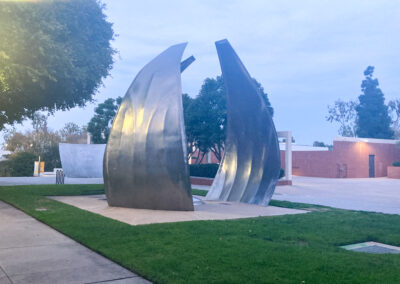Now
Piotr Kowalski
The main elements that make up “Now” were formed underwater by exploding dynamite charges attached to sheet steel. At the time of the 1965 Long Beach International Sculpture Symposium, the North American Aviation Corporation, in El Toro, CA, was conducting experiments in the formation of large metal sheets without the use of dies. They fully subsidized Kowalski’s work and the project provided data which furthered the company’s research. Explosive charges were taped to the sheet steel, which were then lowered into a tank of water and the charges detonated. This technique allowed Kowalski to create the three main components of Now—three 25−foot long pieces shaped like petals and placed in a configuration much like a tulip. Regarding his work, Kowalski stated the following quote: “I sculpture with machines. Like a piano that plays many melodies, a machine can be set to create many things. The alchemy is in the processing . . . . I set up the forces—pressure, stresses, time—then let them behave with their own laws. I seek the utmost limits of the materials to make them do things they didn’t know they could do.”
Born in Lvov, Ukraine (then, part of the Republic of Poland) in 1927, Piotr Kowalski was a French artist of Polish origin. After leaving Poland in 1946, he lived in Sweden, France, the U.S., and Brazil. Having graduated with an architectural degree from the Massachusetts Institute of Technology (MIT) in 1952, Kowalski returned to Paris, where he worked as an architect. In the 1950s, his interest in sculpture evolved from his career in town planning, experimental architecture, and public art. In 1968, Kowalski represented France at the 34th Venice Biennale. From 1978−85, he worked as a Rockefeller Foundation grantee at the Center for Advanced Visual Studies at MIT, where he ran an independent facility to pursue scientific research and artistic activity. Since the 1970s, he has been involved in numerous open air projects, town planning arrangements, and monumental sculptures located in urban areas of France, Austria, Switzerland, the U.S., Denmark, Germany, and Japan. Among his best known works are Porte Sud and the Pascal Square, a town planning/sculpture complex situated at the Paris quarter of La Défense, and the Axe de la Terre—an “astronomical” sculpture located at a roundabout in Marne−la−Vallée.
GET DIRECTIONS »

